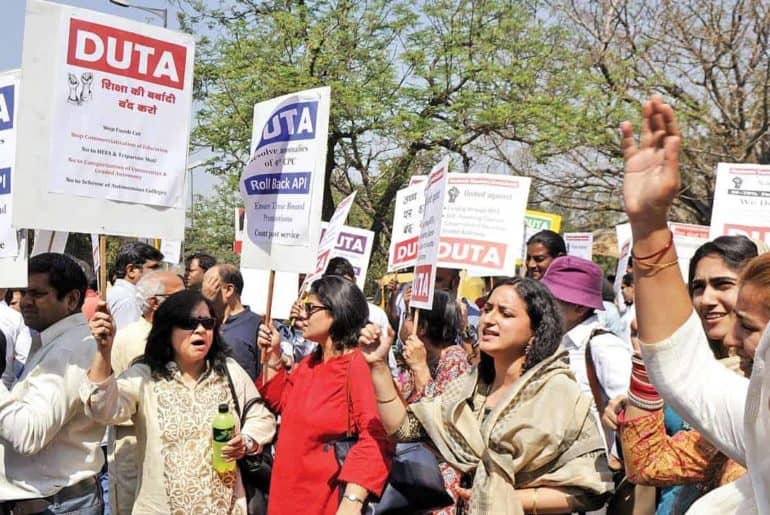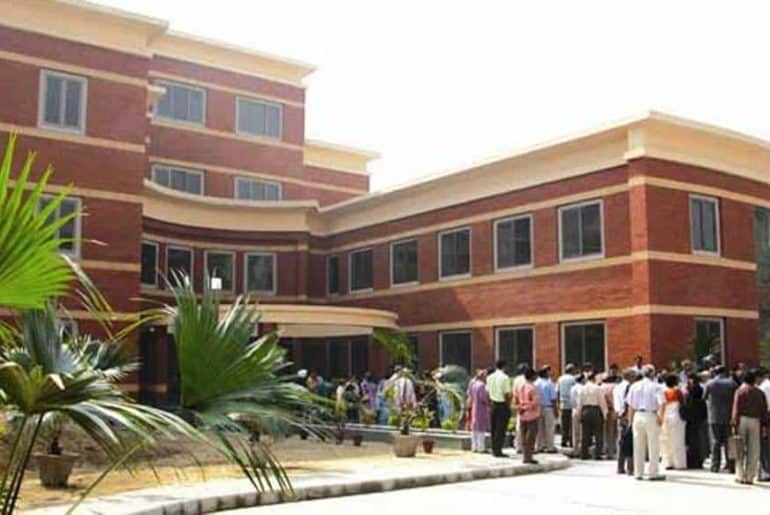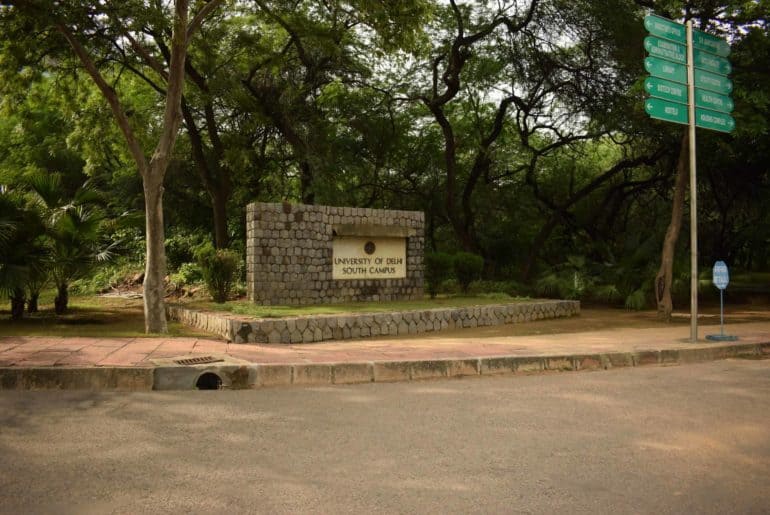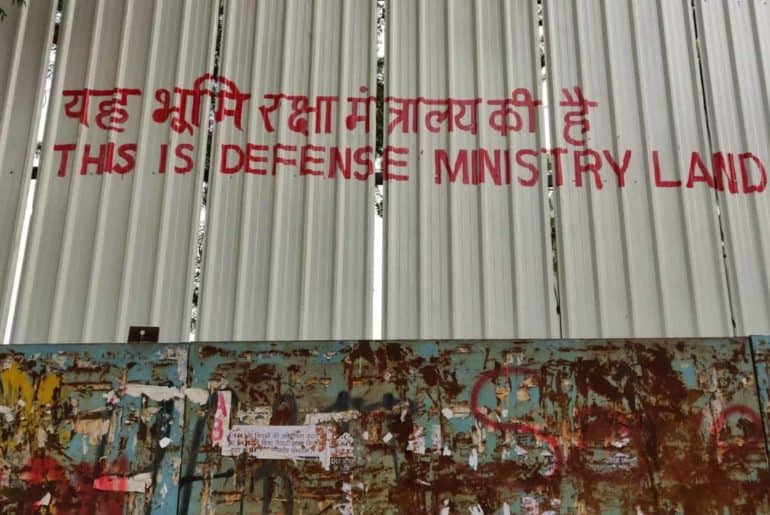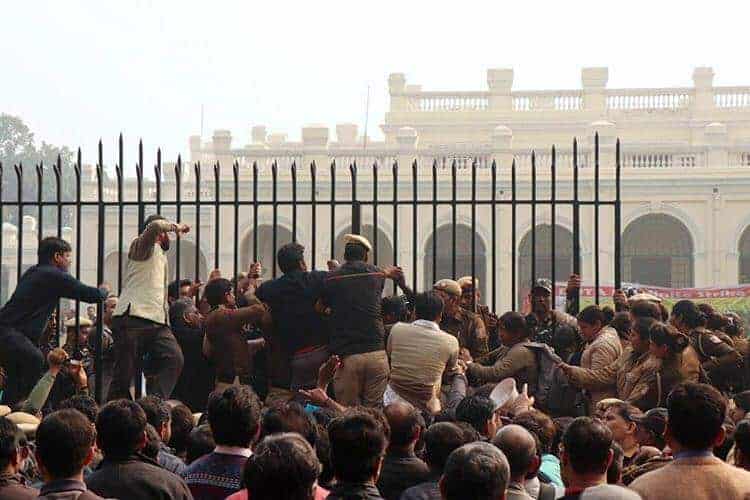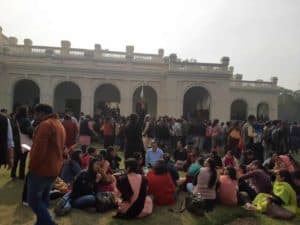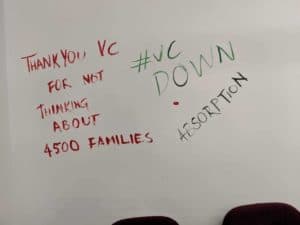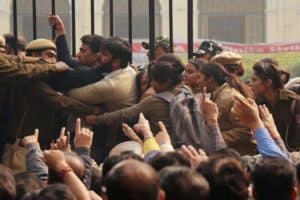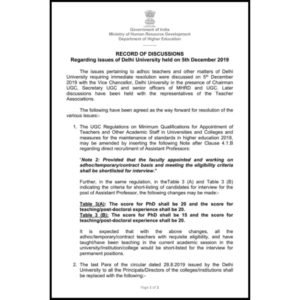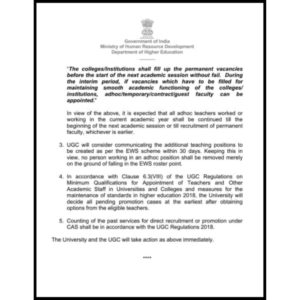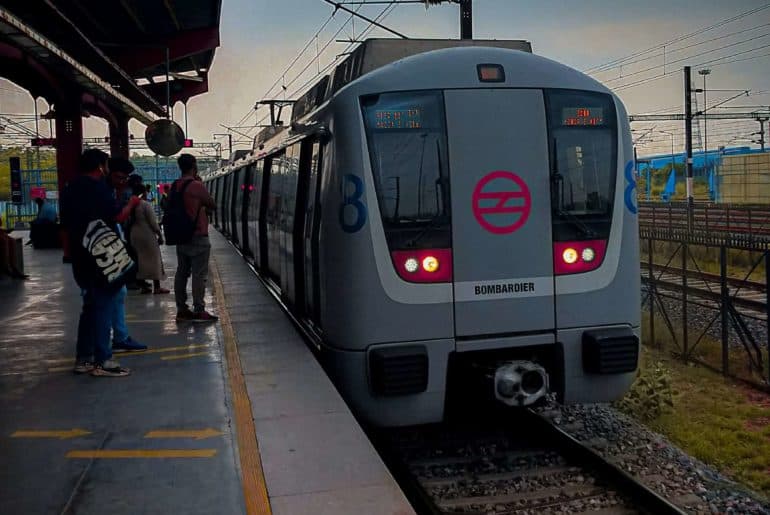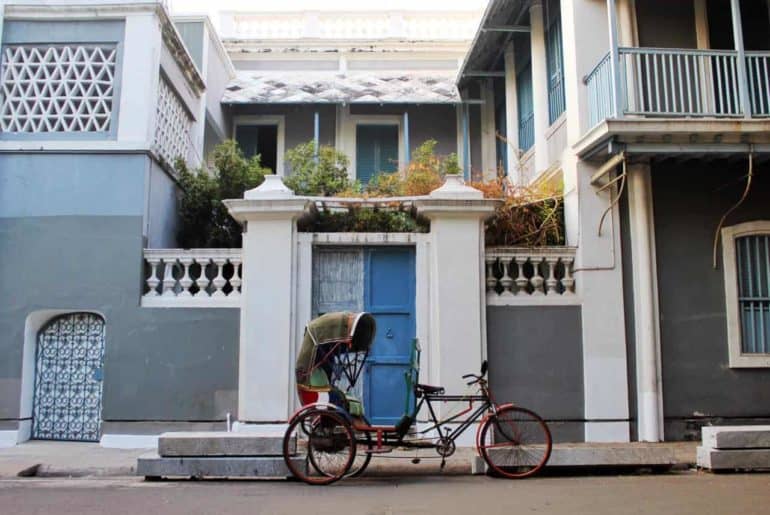On December 9th, as a part of the indefinite strike against the Ad-Hoc Crisis, more than 3000 teachers of the DUTA marched to Parliament Street to demand absorption of all ad-hoc teachers.
The Delhi University Teachers’ Association (DUTA)’s movement for the absorption of ad-hoc and temporary teachers has intensified over the past week. More than three thousand teachers marched to Parliament Street on 9th of December, where many of them courted arrest with the DUTA leadership.
DUTA began protesting from 4th of December, the protest that initially began outside of VC office has seen some improvements. The protest continued day and night,. in many parts of the National Capital. It has seen many forms of protesting like Vice-Chancellor (VC) Office Gherao, candlelight marches, “We Are Our Families” and much more.
After much struggle, the Ministry of Health and Development (MHRD), agreed to some of the urgent demands of the DUTA, including the amendment to the 28th August DU Administration Circular and the counting of past services in all pending cases of promotions as per the 2018 Career Advancement Scheme. However, the demands for the absorption of ad-hoc teachers and the counting of total years of service for promotions have not been conceded to by the MHRD.
The ad-hoc teachers were let go all, overnight, by the decree of the 28th August Circular, the inhuman and exploitative conditions under which Adhoc teachers have been forced to work for many years, including the denial of minimum employee rights like maternity leave etc. can only be mitigated through absorption as believed by the DUTA.
In order to gain more momentum to the movement, The DUTA leadership has written a letter to the HRD Minister, urging the Ministry to initiate further dialogue on all the urgent and pending issues that have been ignored till now.
In a letter titled ‘Demand for a UGC Regulation for the One-Time Absorption of temporary and ad-hoc teachers and other crucial demands of teachers of Delhi University’, addressed to Sh. Ramesh Pokhriyal ‘Nishank’, Hon’ble Minister, Ministry of Human Resources Development, the DUTA has welcomed the timely intervention of the MHRD and UGC in meeting the teachers’ representatives to find solutions and the acceptance of some of their key demands through the Ministry’s communication dated 5th December 2019.
The letter also mentions other unaddressed demands of the Association such as that the Second Tranche positions of the much delayed Other Backward Classes (OBCs) Expansion and Economically Weaker Section (EWS) Expansion be immediately utilized and added to the teaching roster following the Department of Personnel and Training (DoPT) guidelines. In this context, the DUTA also demands that the Kale Committee report be adopted and implemented in Delhi University and that the University Grants Commission (UGC) sanctions posts for self-financing courses and absorbs teachers working on these positions.
The DUTA has also been demanding an end to the constant threat to the service conditions of the teachers of Physical Education in the University.
DUTA, has also, allegedly said, “…if the MHRD continues to ignore the DUTA’s pending demands, it will face the collective ire of the teaching community.”
In light of these recent developments in the teachers’ resistance movement in the University, Rajib Ray, President DUTA, in conversation with DU Beat, encouraged the student-teacher collective step-up their involvement in the movement for teachers’ welfare and an efficient education system.
Featured Image Credits: DNA India
Chhavi Bahmba
Bhavya Pandey

